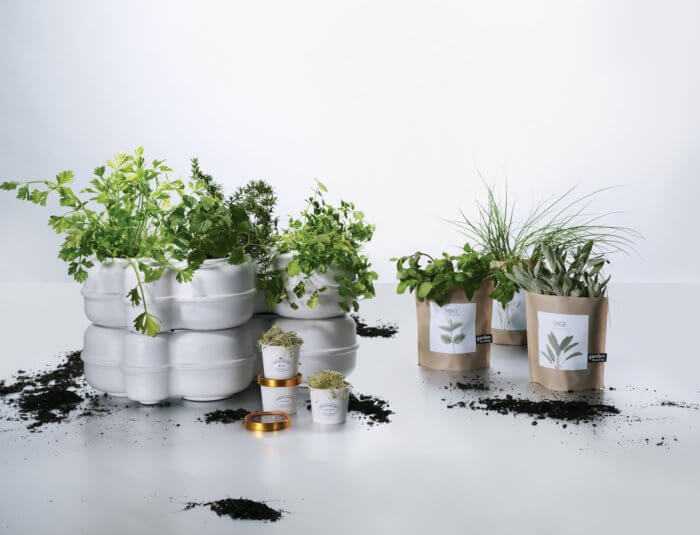5 simple tips for growing an indoor herb garden
October 11th, 2018

So regardless of how big—or small—your current kitchen is, there’s no question an indoor herb garden would make a great addition to your home. Scroll ahead for five easy tips on how to get started.
1. Find a sunny spot

You don’t need a full greenhouse to successfully grow herbs, just a dedicated spot that will get at least six hours of sun a day. In fact, your indoor herb garden can be as simple as a row of potted plants.
Photo by Iwan Baan

Beyond aesthetics, it is also important to pay attention to the material of the containers you choose. Although clay pots can help with drainage, they tend to dry out quickly and clay saucers let moisture pass through, which can also damage your countertops. We recommend going with plastic, rubber, glass, or metal options.
3. Pick a few good herbs to grow

Make sure to do your research when choosing which herbs you want to grow first, as some plants require more maintenance than others.
If you’re just starting out, don’t feel pressured to go overboard with your herb options. Start with your favorite herb and go from there. Instead of growing a variety, it might be better to grow a few batches of the same plant first so that you always have stock. If you’re looking for herbs that require minimal maintenance, chives, peppermint, rosemary, and parsley are superb choices. Others, such as basil and thyme, need more sunlight and can be more challenging to grow indoors.
4. Think about your containers and spacing
It is always best to grow each herb in its own pot because each type of plant has their own water requirements. For example, rosemary likes dry soil, while parsley and chives require more water. Mint is known to take over containers and crowd out other plants, so it’s best to plant this herb by itself. Once you’ve figured out the logistics of which herbs to group together, follow the directions on the seed packets. Always use good quality soil and give the plants more space than you think is needed.
5. Regularly maintain your herb garden
As with an outdoor garden, it is vital to regularly maintain your plants. Use your fingers or a scissors to pinch back the tops of the plants to keep them from flowering. Be sure to harvest the plants as soon as they are mature. Just be careful not to remove too much of the plant at once—no more than 1/3-inch at any given time.
Turning the plants frequently can also help ensure the plants are draining properly so the roots don’t rot.
Original source: dwell
Read original article here.
Original article: The Province
Read original aricle here.
